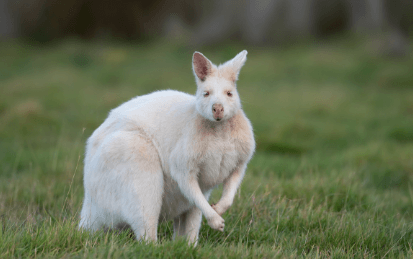Animal:Npxoyfvf6iw= Wallabees

Wallabees, intriguing marsupials native to Australia and New Guinea, display remarkable adaptability to various environments and possess unique social structures that facilitate foraging and genetic diversity. Their herbivorous diet is finely attuned to their habitats, yet the species faces significant threats from habitat degradation and predation. Conservation efforts are underway, but the complexity of their social behavior raises questions about the efficacy of these initiatives. As we explore the unique characteristics and challenges facing wallabees, one must consider the broader implications for biodiversity and ecosystem health.
Unique Characteristics of Wallabees
The remarkable adaptability of wallabees exemplifies the intricate relationship between morphology and environmental demands.
Their dietary habits, primarily herbivorous, are finely tuned to exploit available vegetation, showcasing their ecological versatility.
Additionally, reproductive traits, including a relatively short gestation period and the capability for continuous breeding, enhance their survival in fluctuating habitats.
These characteristics collectively underscore the wallabees’ resilience in diverse ecosystems.
See also: Animado:Hy_Ovryez8s= Perro
Habitats and Distribution
Adaptability extends beyond physiological traits to encompass the diverse habitats in which wallabees thrive.
These marsupials inhabit grasslands, woodlands, and scrublands, which support their varied diet preferences, consisting mainly of grasses and leaves.
Wallabees exhibit distinct breeding habits influenced by environmental factors, leading to localized populations that reflect their habitat’s availability of resources, ultimately shaping their distribution across Australia and New Guinea.
Social Behavior and Interaction
Although often perceived as solitary creatures, wallabees exhibit a range of social behaviors that enhance their survival and reproductive success.
Their group dynamics are characterized by hierarchical structures, facilitating cooperation during foraging.
Mating rituals involve elaborate displays and vocalizations, allowing individuals to establish bonds and compete for mates.
These interactions are crucial for maintaining genetic diversity and ensuring the viability of wallabee populations.
Conservation Efforts and Challenges
Conserving wallabees requires a multifaceted approach that addresses both habitat preservation and population management.
Key challenges include habitat degradation from urbanization and agriculture, which exacerbate population threats such as predation and disease.
Effective conservation strategies must involve protecting natural habitats, implementing breeding programs, and raising public awareness to foster coexistence, ultimately ensuring the sustainability of wallabee populations in their native ecosystems.
Conclusion
In summary, the plight of wallabees serves as a poignant reminder of the fragility of nature’s intricate tapestry. As these remarkable marsupials navigate the treacherous waters of habitat degradation and predation, their survival hinges precariously on collective human intervention. The fate of wallabees is not merely a reflection of their own resilience but a stark indicator of the broader ecological upheaval threatening countless species. Urgent and concerted conservation efforts are not just essential; they are an existential imperative for the future of biodiversity.




